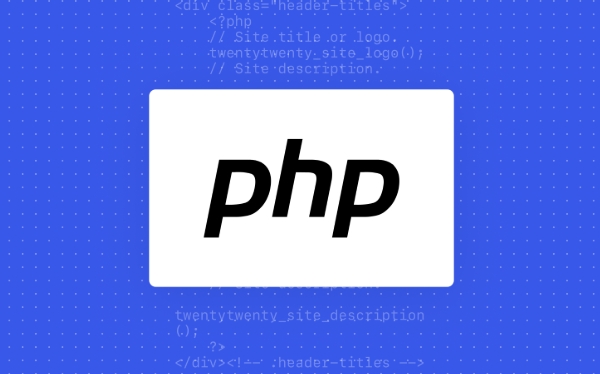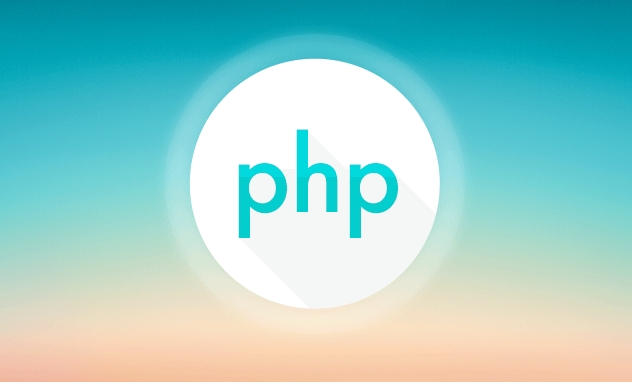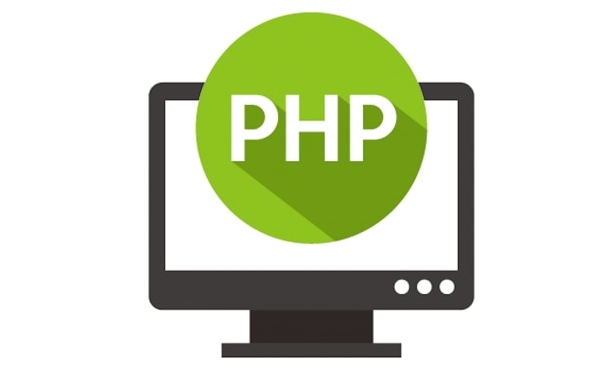The easiest PHP framework to learn is Laravel, due to its clean documentation, expressive syntax, and built-in tools for common tasks like routing, authentication, and database interactions. 1. Laravel offers beginner-friendly documentation with practical examples. 2. It includes features such as built-in authentication, the Artisan command-line tool, Eloquent ORM, and Blade templating engine. 3. These tools reduce boilerplate code and simplify development. For lighter alternatives, 4. CodeIgniter provides minimal configuration and a lightweight structure, and 5. Lumen offers a simplified version of Laravel ideal for APIs or small apps. Learning tips include starting with basic routes and controllers, using Artisan commands, mastering Composer, following real-world tutorials, and using local environments like Laragon or Laravel Sail. While Laravel balances power and simplicity, beginners can later explore more advanced features or scale back if needed.

If you're looking for the easiest PHP framework to learn, Laravel is often the top recommendation. It's not just popular—it’s designed with developer experience in mind, which makes it much more approachable than other frameworks like Symfony or CodeIgniter, especially for beginners.

The key reasons Laravel stands out are its clean documentation, expressive syntax, and built-in tools that handle common tasks like routing, authentication, and database interactions. That doesn’t mean it’s the only option, but if your goal is to get up and running quickly without getting bogged down by complexity, Laravel fits the bill.

Why Laravel Is a Good Starting Point
One of the main things that makes Laravel easy to learn is how well everything is documented. The official docs are beginner-friendly and filled with practical examples. You don’t have to guess how things work—most questions you’ll have are already answered there.
Also, Laravel comes with many features out of the box, such as:

- Built-in authentication scaffolding
- Artisan command-line tool for generating code
- Eloquent ORM for working with databases easily
- Blade templating engine for clean front-end integration
These tools reduce the amount of boilerplate code you need to write, so you can focus more on building functionality rather than setting up infrastructure.
Simpler Alternatives Worth Considering
If Laravel still feels a bit heavy, CodeIgniter or Lumen (a micro-framework by Laravel) might be better for small projects or learning the basics without too much abstraction.
- CodeIgniter has minimal configuration needs and a very lightweight footprint.
- Lumen strips away many of Laravel’s full-stack features, making it faster and simpler for APIs or smaller applications.
Both are great stepping stones. CodeIgniter is especially good if you want to understand how PHP frameworks structure things before diving into Laravel.
Learning Tips That Help
When you're starting with any PHP framework, it’s easy to feel overwhelmed by all the new concepts. Here are a few tips to make it smoother:
- Start with basic routes and controllers before jumping into advanced topics.
- Use Laravel’s built-in tools like
php artisan make:controllerto generate files automatically. - Don’t skip learning Composer—it’s essential for managing dependencies in modern PHP.
- Follow along with simple tutorials that build real things, like a blog or task list.
It also helps to use a local development environment like Laragon or XAMPP, or even Laravel’s own Sail system based on Docker. These save time on setup and let you focus on writing code.
Final Thoughts
Laravel is widely considered the easiest PHP framework to learn because it balances power with simplicity. Once you get comfortable with the basics, you can explore deeper into things like queues, testing, and package development. But at the start, you don’t need to worry about all that.
For most people, jumping into Laravel and sticking with it through the early hurdles is the way to go. If it ever feels too big, remember you can always scale back with Lumen or another lighter framework later.
Basically, give Laravel a try—it’s probably easier than you think once you get going.
The above is the detailed content of what is the easiest php framework to learn. For more information, please follow other related articles on the PHP Chinese website!

Hot AI Tools

Undress AI Tool
Undress images for free

Undresser.AI Undress
AI-powered app for creating realistic nude photos

AI Clothes Remover
Online AI tool for removing clothes from photos.

Clothoff.io
AI clothes remover

Video Face Swap
Swap faces in any video effortlessly with our completely free AI face swap tool!

Hot Article

Hot Tools

Notepad++7.3.1
Easy-to-use and free code editor

SublimeText3 Chinese version
Chinese version, very easy to use

Zend Studio 13.0.1
Powerful PHP integrated development environment

Dreamweaver CS6
Visual web development tools

SublimeText3 Mac version
God-level code editing software (SublimeText3)

Hot Topics
 What are some best practices for versioning a PHP-based API?
Jun 14, 2025 am 12:27 AM
What are some best practices for versioning a PHP-based API?
Jun 14, 2025 am 12:27 AM
ToversionaPHP-basedAPIeffectively,useURL-basedversioningforclarityandeaseofrouting,separateversionedcodetoavoidconflicts,deprecateoldversionswithclearcommunication,andconsidercustomheadersonlywhennecessary.StartbyplacingtheversionintheURL(e.g.,/api/v
 How do I implement authentication and authorization in PHP?
Jun 20, 2025 am 01:03 AM
How do I implement authentication and authorization in PHP?
Jun 20, 2025 am 01:03 AM
TosecurelyhandleauthenticationandauthorizationinPHP,followthesesteps:1.Alwayshashpasswordswithpassword_hash()andverifyusingpassword_verify(),usepreparedstatementstopreventSQLinjection,andstoreuserdatain$_SESSIONafterlogin.2.Implementrole-basedaccessc
 What are weak references (WeakMap) in PHP, and when might they be useful?
Jun 14, 2025 am 12:25 AM
What are weak references (WeakMap) in PHP, and when might they be useful?
Jun 14, 2025 am 12:25 AM
PHPdoesnothaveabuilt-inWeakMapbutoffersWeakReferenceforsimilarfunctionality.1.WeakReferenceallowsholdingreferenceswithoutpreventinggarbagecollection.2.Itisusefulforcaching,eventlisteners,andmetadatawithoutaffectingobjectlifecycles.3.YoucansimulateaWe
 What are the differences between procedural and object-oriented programming paradigms in PHP?
Jun 14, 2025 am 12:25 AM
What are the differences between procedural and object-oriented programming paradigms in PHP?
Jun 14, 2025 am 12:25 AM
Proceduralandobject-orientedprogramming(OOP)inPHPdiffersignificantlyinstructure,reusability,anddatahandling.1.Proceduralprogrammingusesfunctionsorganizedsequentially,suitableforsmallscripts.2.OOPorganizescodeintoclassesandobjects,modelingreal-worlden
 How can you handle file uploads securely in PHP?
Jun 19, 2025 am 01:05 AM
How can you handle file uploads securely in PHP?
Jun 19, 2025 am 01:05 AM
To safely handle file uploads in PHP, the core is to verify file types, rename files, and restrict permissions. 1. Use finfo_file() to check the real MIME type, and only specific types such as image/jpeg are allowed; 2. Use uniqid() to generate random file names and store them in non-Web root directory; 3. Limit file size through php.ini and HTML forms, and set directory permissions to 0755; 4. Use ClamAV to scan malware to enhance security. These steps effectively prevent security vulnerabilities and ensure that the file upload process is safe and reliable.
 What are the differences between == (loose comparison) and === (strict comparison) in PHP?
Jun 19, 2025 am 01:07 AM
What are the differences between == (loose comparison) and === (strict comparison) in PHP?
Jun 19, 2025 am 01:07 AM
In PHP, the main difference between == and == is the strictness of type checking. ==Type conversion will be performed before comparison, for example, 5=="5" returns true, and ===Request that the value and type are the same before true will be returned, for example, 5==="5" returns false. In usage scenarios, === is more secure and should be used first, and == is only used when type conversion is required.
 How can you interact with NoSQL databases (e.g., MongoDB, Redis) from PHP?
Jun 19, 2025 am 01:07 AM
How can you interact with NoSQL databases (e.g., MongoDB, Redis) from PHP?
Jun 19, 2025 am 01:07 AM
Yes, PHP can interact with NoSQL databases like MongoDB and Redis through specific extensions or libraries. First, use the MongoDBPHP driver (installed through PECL or Composer) to create client instances and operate databases and collections, supporting insertion, query, aggregation and other operations; second, use the Predis library or phpredis extension to connect to Redis, perform key-value settings and acquisitions, and recommend phpredis for high-performance scenarios, while Predis is convenient for rapid deployment; both are suitable for production environments and are well-documented.
 How do I perform arithmetic operations in PHP ( , -, *, /, %)?
Jun 19, 2025 pm 05:13 PM
How do I perform arithmetic operations in PHP ( , -, *, /, %)?
Jun 19, 2025 pm 05:13 PM
The methods of using basic mathematical operations in PHP are as follows: 1. Addition signs support integers and floating-point numbers, and can also be used for variables. String numbers will be automatically converted but not recommended to dependencies; 2. Subtraction signs use - signs, variables are the same, and type conversion is also applicable; 3. Multiplication signs use * signs, which are suitable for numbers and similar strings; 4. Division uses / signs, which need to avoid dividing by zero, and note that the result may be floating-point numbers; 5. Taking the modulus signs can be used to judge odd and even numbers, and when processing negative numbers, the remainder signs are consistent with the dividend. The key to using these operators correctly is to ensure that the data types are clear and the boundary situation is handled well.






